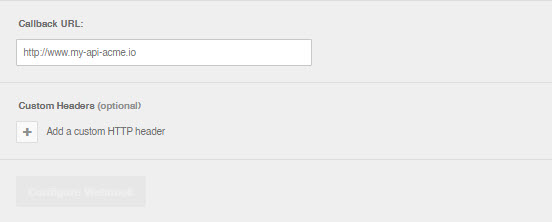Jira Service Management
Send BigPanda incidents to Jira Service Management (JSM) to create alerts and trigger notifications. This webhook-based integration pushes rich incident data to JSM, including changes and similar incidents.
Supported Version | Type | Authentication |
|---|---|---|
Jira Cloud | Native app | API Key and Bearer Token |
Install the Jira Service Management integration
Use the following instructions to create and configure a Jira Service Management integration.
Create an app key
Create an app key in BigPanda.
Integration specific
You'll need a separate app key for each integrated system.

App key configuration in BigPanda
Install the BigPanda app in Jira Service Management
Admin permissions are needed to install the BigPanda application in JSM. To install and authorize the app:
Add the BigPanda JSM app from the Atlassian Marketplace and follow the instructions in Jira's documentation for installing a new app.
Go to the BigPanda console, then navigate to Settings > API Keys to create a new API key. You will need this for authorizing and configuring the integration. Once you generate the API key, be sure to copy and save it, as this key will only be visible once.
Authenticate the BigPanda app in Jira by navigating to Apps > BigPanda in the sidebar menu. Fill in the Access Token and API Key fields in the Authentication tab with the following details:
Access Token:
<Your Org Bearer Token>API Key: Enter the unique API key you created for Jira integrations.
Click Save.
Configure the BigPanda app in Jira Service Management
After installing the BigPanda app, go to the left menu and navigate to Apps > ... > Manage Apps > BigPanda (JSM) > Get Started to configure the application with the following fields:
Usage region. EU users should select
eu.bigpanda.io. Everyone else should selecta.bigpanda.io.API key. The BigPanda API key you created in step two.
JSM integration app key. The BigPanda app key you created in step one.
Note: the Webtrigger URLs at the top of this configuration page will be needed later in the installation process.
Create an API integration in Jira Service Management
Once the BigPanda app is installed and configured, you will need to create two integrations in JSM, the API integration, and a webhook integration. First, you need to create an API integration.
Navigate to Teams > [Your team] > Go to operations.
(Note: Integrations must be created via the tab on a team’s operation page, but they can be configured to apply to all teams in your organization.)
From the Operations overview page, select the Integrations tab, then click Add integration.
Run a search and select API. (Note that the BigPanda integration found in this search is not the currently supported version and will not work.)
On the next screen, enter a name for the integration.
(Optional) Select a team in Assignee team if you want a specific team to receive alerts from the integration. Select None if you want the integration to be available for all teams in your organization.
Select Continue to save the Integration and open the integration settings page.
On the integration settings page, copy the API key. You’ll need this to finish configuring the integration in BigPanda later.
Click Turn on integration.
Create a webhook integration in Jira Service Management
Next, create a webhook integration.
From the Operations overview page, select Integrations and then Add integration.
Run a search and select Webhook.
Enter a name for the organization.
(Optional) If you want a specific team to receive alerts from the integration, in Assignee team, select that team. Select None if you want the integration to be available for all teams in your organization.
Select Continue to save the Integration and open the integration settings page.
On the integration settings page, click Edit. In this modal, select Authenticate with a Webhook account.
Copy the JSM Webhook Integration URL from the BigPanda app configuration screen in step three. Paste into the Webhook URL field.
Tick the boxes for Add alert description to payload and Add alert details to payload. Then click Save.
On the integrations setting page, scroll down to Alert actions and check the following values:
Alert is created
Note is added
Alert is closed
(Note: If you do not see these configuration options, make sure that you’ve enabled Post to Webhook URL for Jira Service Management alerts.)
Click Turn on integration.
Configure the webhook in BigPanda
Once you’ve completed all the configuration steps in Jira Service Management, use the form below to specify the callback URL and authentication details. (For more details on configuring a webhook and available parameters, see the Notifications Webhook documentation.)
In the Callback URL field, paste the BigPanda Integration URL from the app configuration page in step three.
Click the plus sign to Add a custom a HTTP header and add the following key-value pair:
Header key:
x-jsm-app-keyHeader value: the API key from the JSM API integration you created in step four.

Success!
After the form is complete, click Configure Webhook. You are now ready to share incidents using the JSM webhook integration.